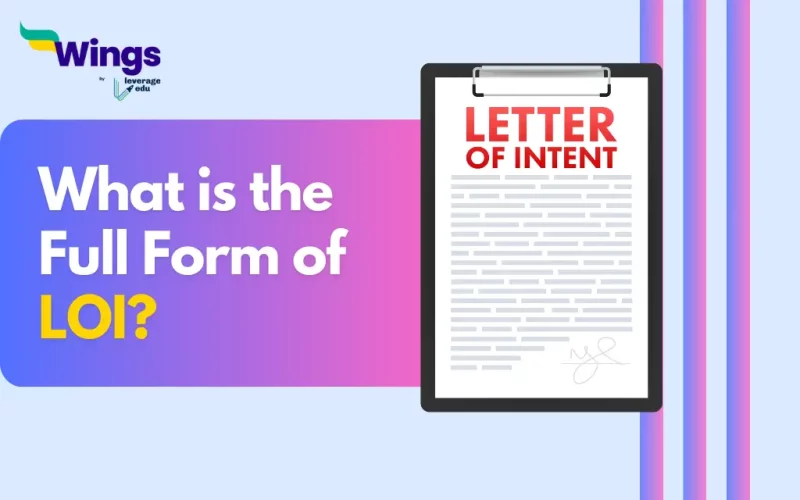The Full Form of LOI is a Letter of Intent. A formal document is used in various domains, including business, academia, and legal matters, to express a party’s intention to enter into a particular agreement or transaction. Furthermore, a Letter of Intent outlines the key terms and conditions that the parties plan to negotiate and finalize in a subsequent formal agreement. Read on to learn more about LOI Full Form, its Purpose, Components and Need!
Table of Contents [show]
What is the Purpose of a Letter of Intent?
The context in which a Letter of Intent is used determines its multiple purposes. Let’s take a closer look at some common applications:
Business Transactions
Businesses often use a Letter of Intent during mergers and acquisitions or when they enter into partnerships. Additionally, the preliminary agreements outline the purchase price, key assets involved, and any conditions that need to be met before signing the final agreement.
Academia and Research
In academic circles, researchers may use a Letter of Intent to express their interest in collaborating with other institutions or individuals. Moreover, this document lays out the objectives, scope, and expected outcomes of the proposed research collaboration.
Real Estate
When buying or selling property, the buyer can use a Letter of Intent to express their serious interest in purchasing the property. In addition, it may include details such as the offer price, financing arrangements, and any contingencies that need to be addressed before proceeding with the sale.
Also Read: What is the Full Form of ESIC?
What are the Components of a Letter of Intent?
The specific content of a Letter of Intent can vary depending on the context, but it typically includes these key components:
Introduction
The letter begins with a formal introduction, including the names and contact information of the parties involved.
Intent Statement:
This section clearly states the intent of the letter, explaining the purpose and the desired outcome.
Terms and Conditions
The letter outlines the key terms and conditions that the parties wish to negotiate further. These may include financial aspects, timelines, responsibilities, and any other pertinent details.
Confidentiality
The inclusion of a confidentiality clause protects sensitive information shared during the negotiation process in some cases.
Also Read: What is the Full Form of TC?
Why is LOI Needed?
A Letter of Intent outlines the main points of an agreement between two parties. However, it is not legally binding, it has serious objectives and helps avoid wasting time on negotiations that might not lead anywhere.
- An LOI benefits both sides by guaranteeing they are on the same page regarding key aspects of the deal.
- Moreover, it allows them to move forward with confidence, hence knowing that the core terms are aligned.
- The LOI also helps identify potential deal breakers early on, thereby protecting everyone involved from unnecessary effort.
- Furthermore, it can act as a framework for drafting a formal contract, thus accelerating the overall process.
Popular Full Forms
We hope this blog has helped you understand the LOI Full Form and everything related to it. If you want to know more, find the full forms list on our blog. In the world of short forms, you can rely on the Leverage edu page to know about more full forms like this! Connect with us study abroad experts to achieve your international dream today!
 One app for all your study abroad needs
One app for all your study abroad needs















 45,000+ students trusted us with their dreams. Take the first step today!
45,000+ students trusted us with their dreams. Take the first step today!
